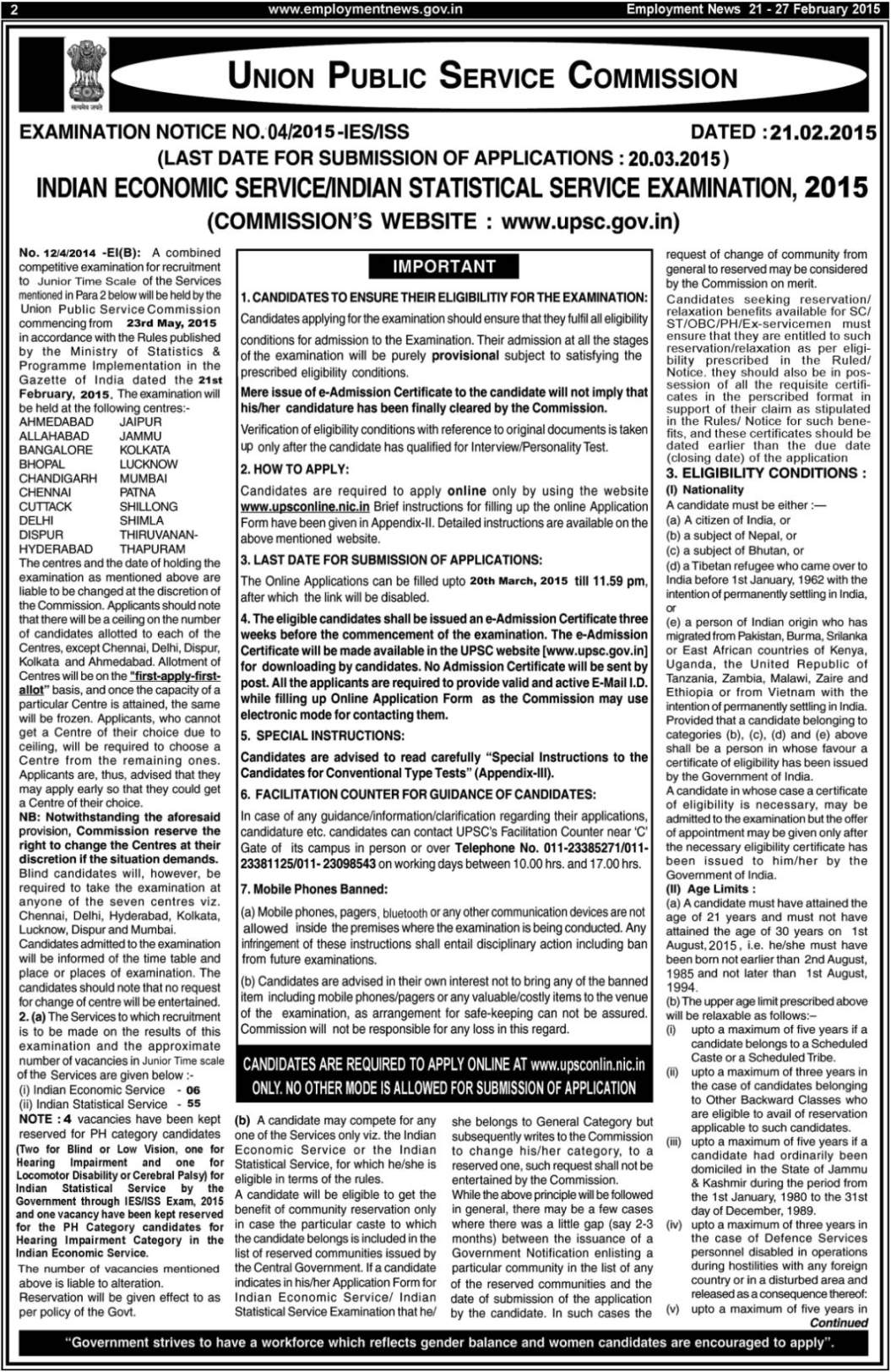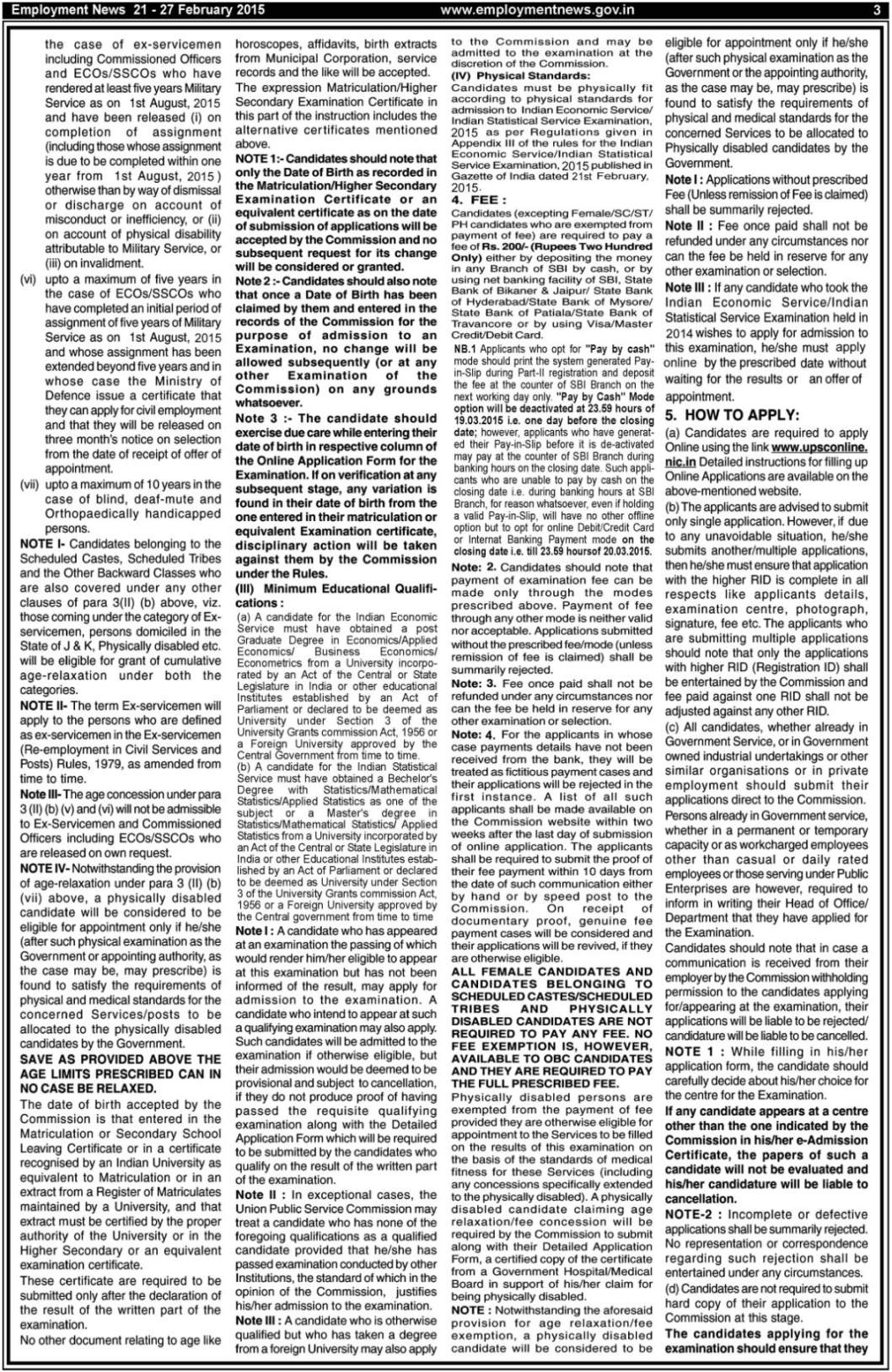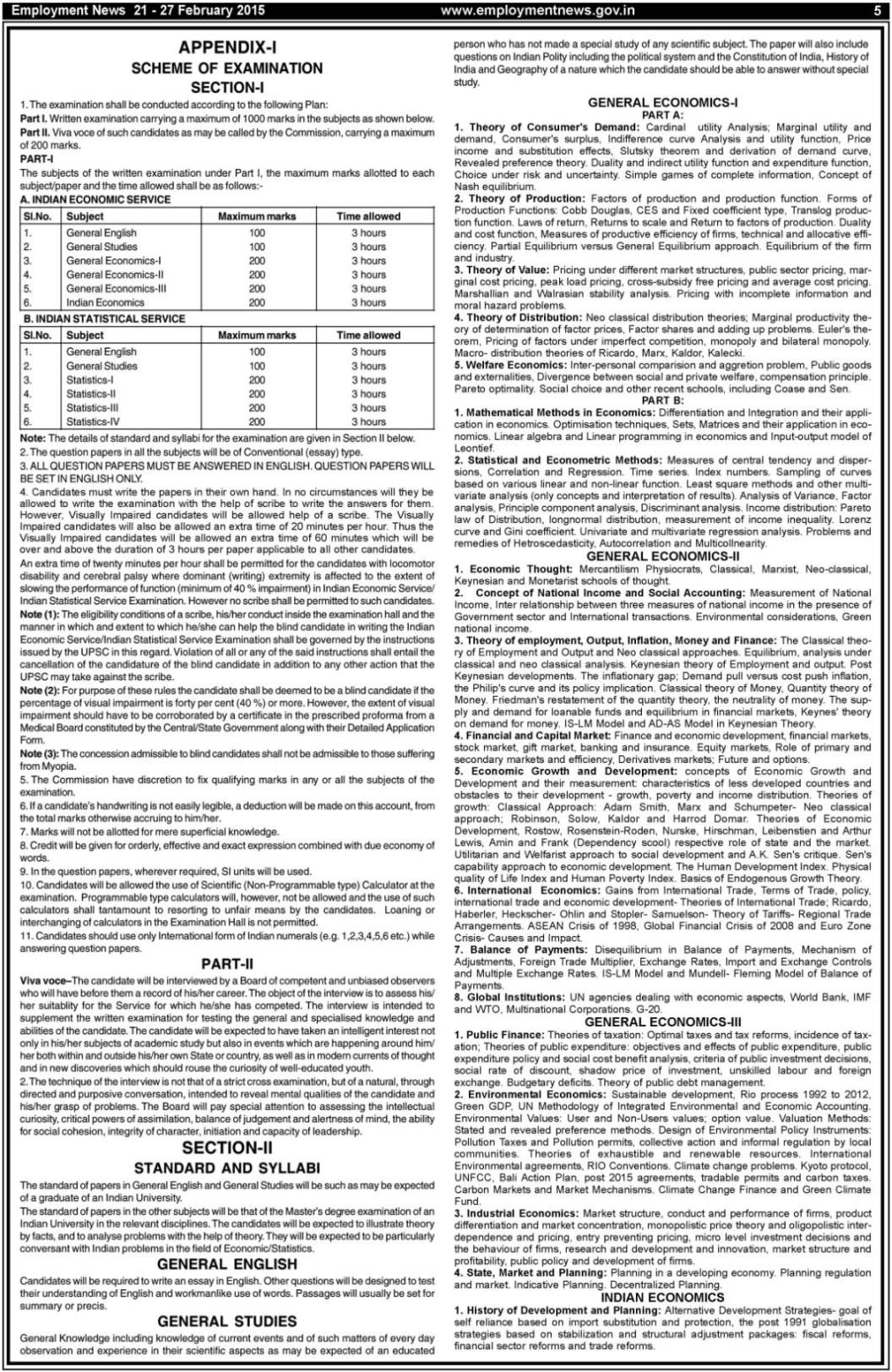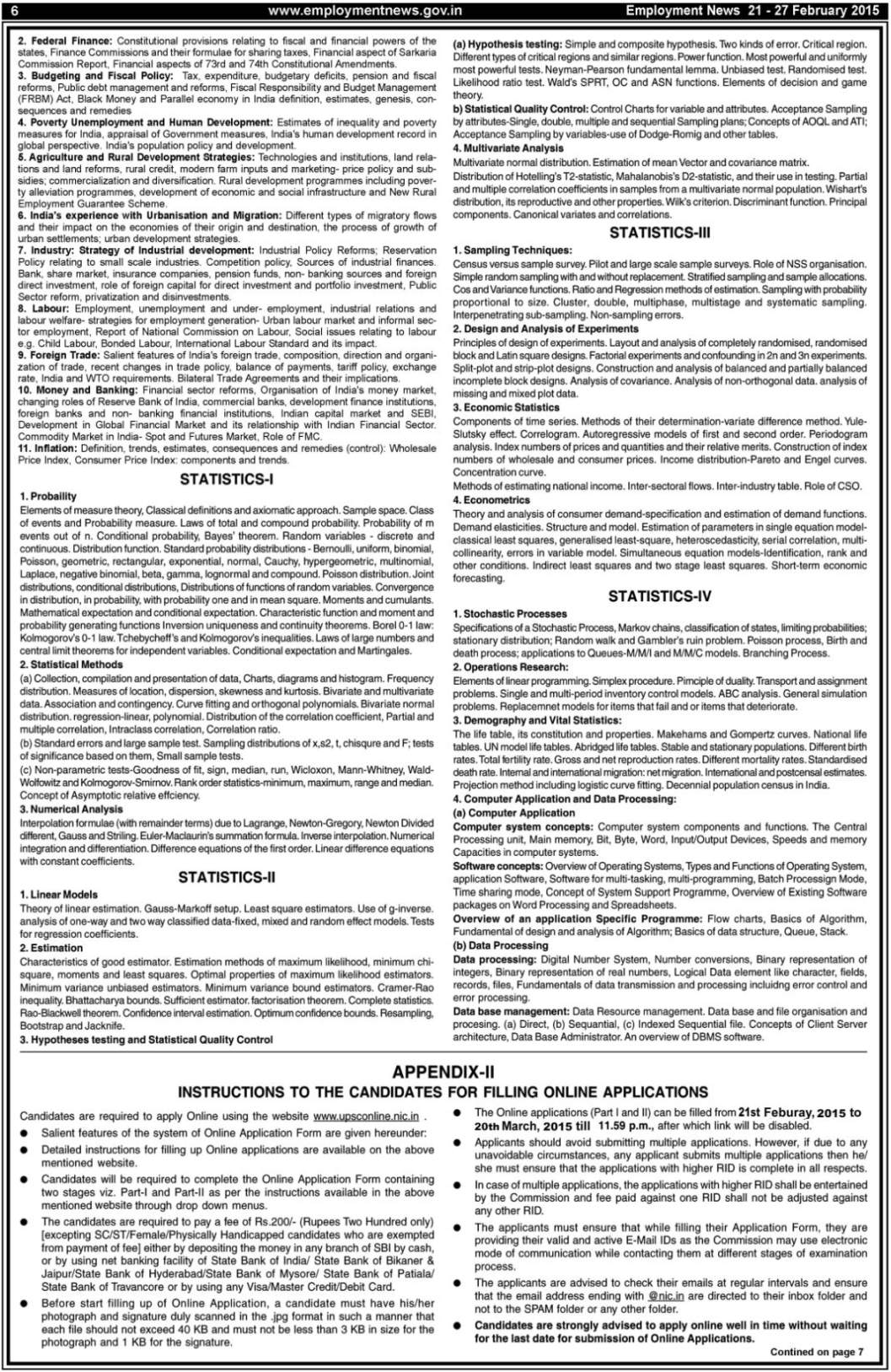| Re: What is Indian Economic Services
The Indian Economic Service is the administrative inter-ministerial and inter-departmental civil service under Group A of the
Written Examination
[A]. Indian Economic Service
Sl.No. Subject Maximum marks Time
1. General English 100 3 hours
2. General Studies 100 3 hours
3. General Economics - I 200 3 hours
4. General Economics - II 200 3 hours
5. General Economics - III 200 3 hours
6. Indian Economics 200 3 hours
[B]. Indian Statistical Service
Sl.No. Subject allowed Maximum marks Time
1. General English 100 3 hours
2. General Studies 100 3 hours
3. Statistics-I 200 3 hours
4. Statistics-II 200 3 hours
5. Statistics-III 200 3 hours
6. Statistics-IV 200 3 hours
General Economics I:
Part A
1. Theory of Consumer's Demand: Cardinal utility Analysis; Marginal utility and demand, Consumer's surplus, Indifference curve Analysis and utility function, Price income and substitution effects, Slutsky theorem and derivation of demand curve, Revealed preference theory. Duality and indirect utility function and expenditure function, Choice under risk and uncertainty. Simple games of complete information, Concept of Nash equilibrium.
2. Theory of Production: Factors of production and production function. Forms of Production Functions: Cobb Douglas, CES and Fixed coefficient type, Translog production function. Laws of return, Returns to scale and Return to factors of production. Duality and cost function, Measures of productive efficiency of firms, technical and allocative efficiency. Partial Equilibrium versus General Equilibrium approach. Equilibrium of the firm and industry.
3. Theory of Value: Pricing under different market structures, public sector pricing, marginal cost pricing, peak load pricing, cross-subsidy free pricing and average cost pricing. Marshallian and Walrasian stability analysis. Pricing with incomplete information and moral hazard problems.
4. Theory of Distribution: Neo classical distribution theories; Marginal productivity theory of determination of factor prices, Factor shares and adding up problems. Euler's theorem, Pricing of factors under imperfect competition, monopoly and bilateral monopoly. Macro- distribution theories of Ricardo, Marx, Kaldor, Kalecki.
5. Welfare Economics: Inter-personal comparision and aggretion problem, Public goods and externalities, Divergence between social and private welfare, compensation principle. Pareto optimality. Social choice and other recent schools, including Coase and Sen.
Part B
1. Mathematical Methods in Economics: Differentiation and Integration and their application in economics. Optimisation techniques, Sets, Matrices and their application in economics. Linear algebra and Linear programming in economics and Input-output model of Leontief.
2. Statistical and Econometric Methods: Measures of central tendency and dispersions, Correlation and Regression. Time series. Index numbers. Sampling of curves based on various linear and non-linear function. Least square methods and other multivariate analysis (only concepts and interpretation of results). Analysis of Variance, Factor analysis, Principle component analysis, Discriminant analysis. Income distribution: Pareto law of Distribution, longnormal distribution, measurement of income inequality. Lorenz curve and Gini coefficient. Univariate and multivariate regression analysis. Problems and remedies of Hetroscedasticity, Autocorrelation and Multicollnearity.
| 



